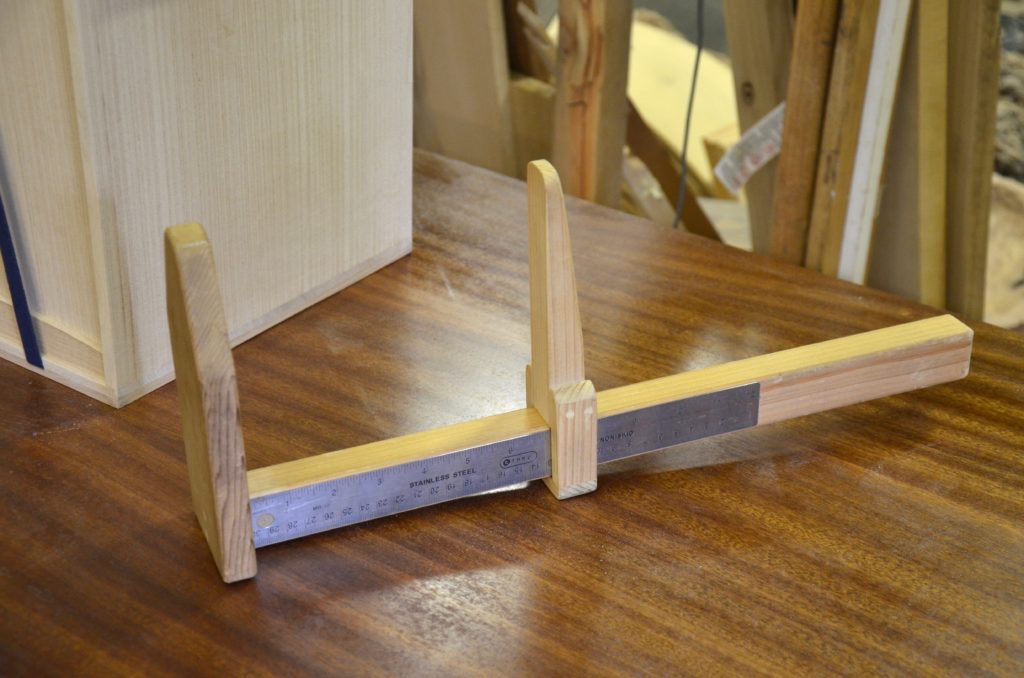We may receive a commission when you use our affiliate links. However, this does not impact our recommendations.
 My friend and neighbor, Takuji Matsuda, is an untraditional traditional Japanese woodworker. He is one of a few remaining makers of a special kind of Japanese box called Kiribako, and perhaps the only North America based maker who is an expert in building dedicated Kiribako for Buddha statues.
My friend and neighbor, Takuji Matsuda, is an untraditional traditional Japanese woodworker. He is one of a few remaining makers of a special kind of Japanese box called Kiribako, and perhaps the only North America based maker who is an expert in building dedicated Kiribako for Buddha statues.
While well rooted in the traditions of Japanese woodworking, Mr. Matsuda, a graduate of the sculpture program at Pratt Institute in New York (One of Takuji teachers and mentors at Pratt, was Toshio Odate, the famous woodworker and educator) gladly embraces the advantages of Western style woodworking when appropriate. For instance, he tells me that since he was introduced to working on workbenches – standing – there is no going back to traditional Japanese ground level work for him. He lamented the years he had to work on the floor and suffer form knee pains and joints stiffness. Yet he still uses Japanese pull style wooden planes on a jig that he devised which allows him to work on practically any kind of table. (I will show this jig in my next blog entry)
His arsenal of hand tools is mostly Japanese chisels, pull saws and wooden planes, but he also owns a small Lie Neilson block plane that he really likes, and a bunch of stationary woodworking machinery, such as a jointer, planer and a contractor’s table saw that makes his work easier.
 Takuji is an innovative artist who makes his leaving building Kiribako, truing bowls, and crafting furniture. Because of his background in sculpture, he is often commissioned to execute complicated sculptural work for other artists who don’t have the time or the expertise in that field. In his spare time, he volunteers teaching woodworking at the school his children go to in our village (see video at the bottom of this blog)
Takuji is an innovative artist who makes his leaving building Kiribako, truing bowls, and crafting furniture. Because of his background in sculpture, he is often commissioned to execute complicated sculptural work for other artists who don’t have the time or the expertise in that field. In his spare time, he volunteers teaching woodworking at the school his children go to in our village (see video at the bottom of this blog)


To build the Kiribako for Buddha statues, Takuji uses Paulownia wood, a fast-growing soft-hardwood that doesn’t receive much attention or recognition in the West but is considered a wood of choice for Kiribako box making in Japan. There are more than a dozen species of this tree in existence but only a few are used in woodworking. The Paulownia Tomentosa, grown in Maryland is his favorite. Native to Asia and hardly used in the USA, it is exported to Japan since quality Asian Paulownia has become harder and harder to procure in the Land of the Rising Sun.



To avoid hurting the delicate statue with a metal caliper Takuji built this makeshift caliper from a 12″ ruler and some scrap wood parts. He used it to transfer the measurements of the Buddha’s base to the spacial wooden tray that will carry it. He then excavates a basin in the tray to house the artifact.

Bellow are pictures of the Kiribako for Buddha statues that Takuji built. Noice the meticulous way in which the box is secured. The hand woven ceremonial ribbon serves both as a handle and as lashing to prevent the door from opening.
Next time I will show the jig that Takuji built to help him plane boards on almost any table.
Otto Specht School from jeanette rodriguez on Vimeo.
Here are some supplies and tools we find essential in our everyday work around the shop. We may receive a commission from sales referred by our links; however, we have carefully selected these products for their usefulness and quality.








